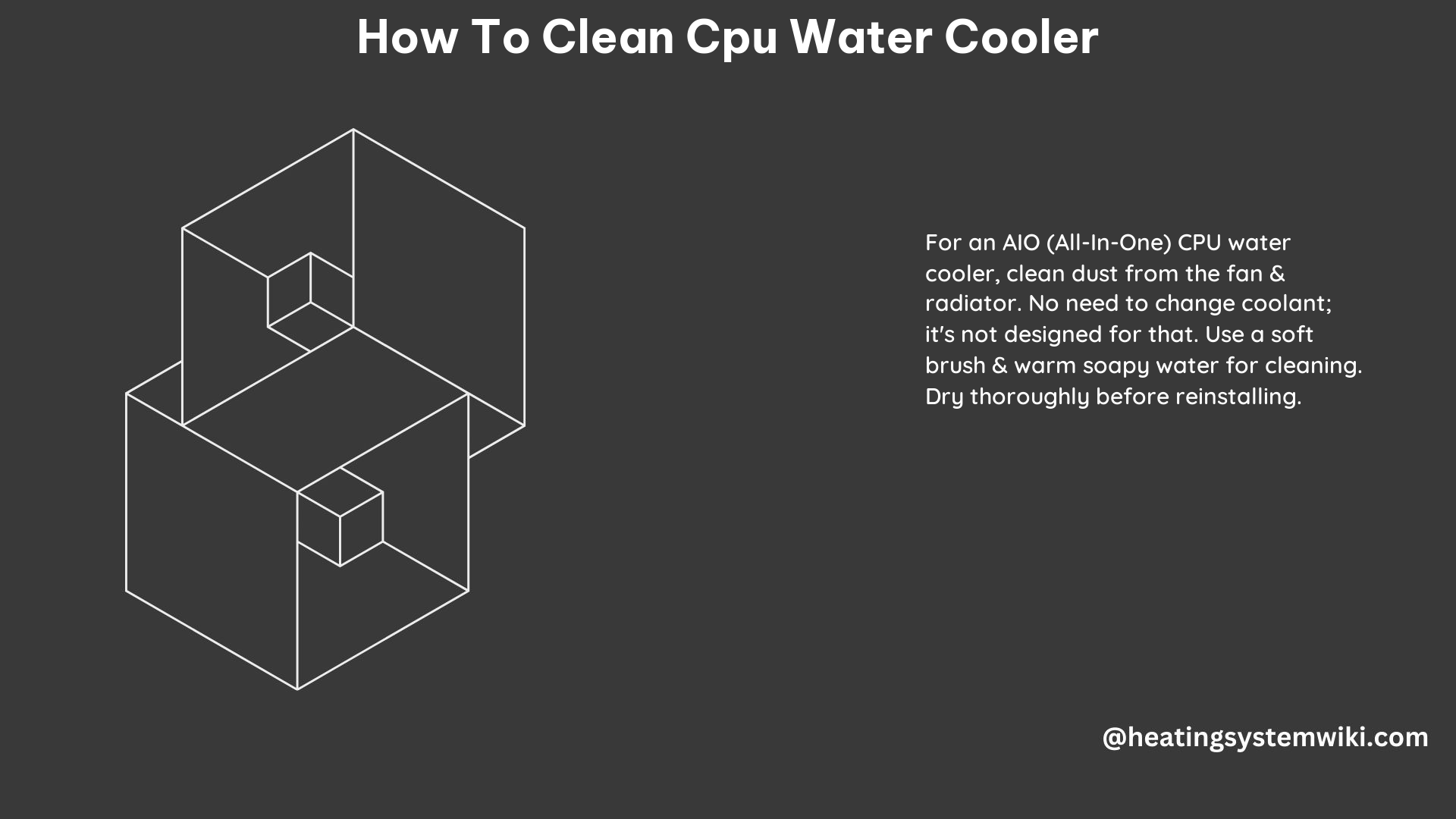Maintaining a clean and well-functioning CPU water cooler is crucial for ensuring optimal system performance and longevity. This comprehensive guide will walk you through the step-by-step process of cleaning your CPU water cooler, covering everything from the necessary tools and precautions to the specific techniques for different cooling system configurations.
Preparing for Cleaning
Before you begin the cleaning process, it’s essential to ensure that your system is properly shut down and unplugged from the power source. This will prevent any potential electrical hazards and allow you to work safely on the components.
- Unplug the Computer: Disconnect the power cable from the wall outlet and ensure that the power supply is turned off.
- Remove the Side Panel: Carefully remove the side panel of your computer case to gain access to the CPU water cooler and its components.
- Disconnect the Fans: Unplug the connectors for the fans attached to the radiator, making note of their orientation for proper reinstallation.
- Detach the Radiator: Unscrew the radiator from the computer case, holding it securely to prevent it from falling and potentially damaging other components.
Cleaning the Radiator and Fans

Once you have access to the radiator and fans, you can begin the cleaning process. It’s important to use a gentle approach to avoid any damage to the delicate components.
- Dust Removal: Use a soft-bristled brush or a can of compressed air to gently remove any accumulated dust and debris from the radiator fins and the fan blades. Be careful not to bend or damage the fins during this process.
- Radiator Cleaning: Rinse the radiator under warm running tap water, ensuring that the water pressure is not too high to avoid bending the fins. Gently scrub the radiator with a soft-bristled brush to dislodge any stubborn dirt or grime.
- Fan Cleaning: Clean the fan blades using a soft cloth or a small amount of isopropyl alcohol. Avoid using water on the fans, as this can potentially damage the bearings or the electrical components.
- Drying: Allow the radiator to air dry completely before reassembling the system. This may take several hours or even overnight, depending on the size and complexity of your cooling system.
Maintaining Custom Water Cooling Loops
If you have a custom water cooling loop, the cleaning process may require additional steps to ensure the longevity and performance of your system.
- Coolant Draining: Drain the existing coolant from the loop, following the manufacturer’s instructions or using a dedicated drain valve.
- Radiator Cleaning: Clean the radiator as described in the previous section, ensuring that all debris and contaminants are removed.
- Loop Flushing: Use a dedicated cleaning solution or distilled water to flush the entire loop, removing any remaining coolant and impurities.
- Refilling the Loop: Refill the loop with fresh, high-quality coolant, ensuring that there are no air bubbles trapped in the system.
Technical Considerations
When cleaning a CPU water cooler, it’s essential to consider the following technical specifications to ensure a thorough and effective cleaning process:
| Specification | Importance |
|---|---|
| Radiator Size | Larger radiators may require more time and effort to clean thoroughly. |
| Fan Size | Larger fans may be more difficult to remove and reinstall. |
| Coolant Type | Some coolants may require special cleaning solutions or procedures. |
| Radiator Material | The material composition of the radiator can affect the cleaning process, with some materials being more prone to corrosion or damage. |
Additionally, it’s crucial to take precautions to avoid any damage to the components during the cleaning process. This includes grounding yourself to prevent static electricity discharge and being gentle when cleaning the radiator fins to avoid bending them.
Conclusion
By following the steps outlined in this comprehensive guide, you can effectively clean your CPU water cooler and maintain its optimal performance. Remember to always prioritize safety, use the appropriate tools and techniques, and refer to the manufacturer’s instructions for any specific guidance. With proper maintenance, your CPU water cooler will continue to provide efficient cooling and reliable system performance for years to come.
